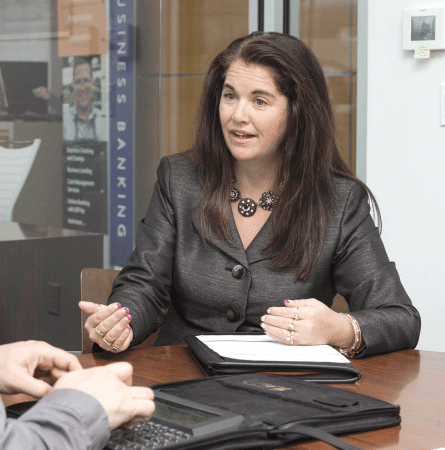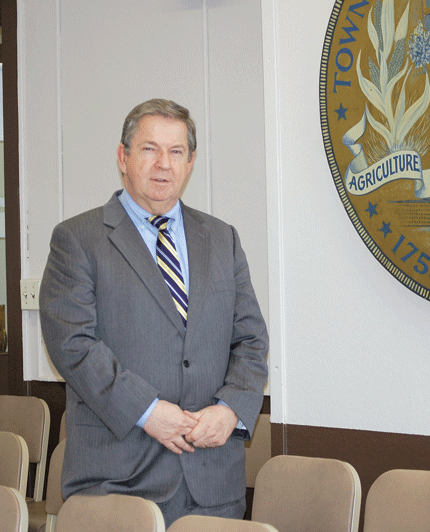HAMPDEN COUNTY
AGAWAM
41 Belmont Ave.
Agawam, MA 01030
Amount: $258,000
Buyer: Ryan T. Kearney
Seller: Leonard Matz
Date: 02/01/16
51 Belvidere Ave.
Agawam, MA 01030
Amount: $115,000
Buyer: Kenneth Modzelesky
Seller: Bank Of America
Date: 01/29/16
21 Blairs Hill Road
Agawam, MA 01001
Amount: $395,000
Buyer: Suhem Soffan
Seller: Sherry S. Molta
Date: 01/29/16
172 Chapel St.
Chicopee, MA 01020
Amount: $153,900
Buyer: Caira M. Dominguez
Seller: Sherri A. Quinn
Date: 02/03/16
16 Factory Place
Chicopee, MA 01013
Amount: $159,900
Seller: Raymond F. Yarkey
Date: 02/01/16
28 Hendom Dr.
Agawam, MA 01030
Amount: $240,000
Buyer: Christopher J. Gallivan
Seller: Robert G. Gordon
Date: 01/29/16
68 Katherine Dr.
Agawam, MA 01001
Amount: $260,000
Buyer: National Transfer Services
Seller: Brian M. Zaniewski
Date: 01/29/16
170 Meadowbrook Road
Agawam, MA 01001
Amount: $168,300
Buyer: Deutsche Bank
Seller: Warren Williams
Date: 01/26/16
788 North West St.
Agawam, MA 01030
Amount: $251,000
Buyer: Stephen Salem
Seller: Carl Ronca
Date: 01/29/16
43 Ridgeway Dr.
Agawam, MA 01030
Amount: $184,300
Buyer: Lauren A. Mendoza
Seller: Brittany A. McCabe
Date: 01/29/16
680 South West St.
Agawam, MA 01030
Amount: $215,000
Buyer: Kevin T. Pagella
Seller: Thomas P. Pagella
Date: 01/29/16
87 Valentine Terrace
Agawam, MA 01001
Amount: $129,000
Buyer: Clara Scott
Seller: Luanne M. Caron
Date: 01/25/16
102 White Fox Road
Agawam, MA 01030
Amount: $275,000
Buyer: Kellee A. Grucci
Seller: Frank J. Montagna
Date: 01/29/16
BRIMFIELD
119 Little Alum Road
Brimfield, MA 01010
Amount: $400,000
Buyer: Tobe L. Gerard
Seller: Sawmill Lane LLC
Date: 01/28/16
CHICOPEE
28 Beaumont Ave.
Chicopee, MA 01013
Amount: $217,000
Seller: Robert Scribner
Date: 01/28/16
23 Bonner St.
Chicopee, MA 01013
Amount: $200,000
Buyer: Gabrielle Bey
Seller: George Vasquez
Date: 01/29/16
641 Broadway St.
Chicopee, MA 01020
Amount: $157,500
Buyer: Ana L. Artigas
Seller: James A. Robb
Date: 01/29/16
19 Hawthorn St.
Chicopee, MA 01020
Amount: $175,000
Buyer: Kendra M. O’Neill
Seller: Wendy W. Fitzgerald
Date: 01/25/16
61 Lemuel Ave.
Chicopee, MA 01013
Amount: $150,000
Buyer: Harry C. Brandt
Seller: Edward J. Trzepacz
Date: 01/26/16
87 Mount Royal St.
Chicopee, MA 01020
Amount: $156,000
Buyer: Carlos T. Torruella
Seller: Terry L. Vanderwert
Date: 01/29/16
225 Murphy Lane
Chicopee, MA 01020
Amount: $149,480
Buyer: Michael E. Fregeau
Seller: Wells Fargo Bank
Date: 01/25/16
46 Nutmeg Circle
Chicopee, MA 01020
Amount: $274,900
Buyer: Larry C. Ball
Seller: Carleen M. Nahorniak
Date: 01/29/16
15 Pleasant St.
Chicopee, MA 01013
Amount: $165,000
Buyer: Michael P. Fitzgerald
Seller: Edna D. Sebor
Date: 01/29/16
37 Reed St.
Chicopee, MA 01020
Amount: $149,900
Buyer: Lisa Letendre
Seller: Bruce A. Leaper
Date: 01/29/16
38 Shepherd St.
Chicopee, MA 01013
Amount: $142,000
Buyer: Marc A. Labrie
Seller: Richard P. Mienkowski
Date: 01/29/16
24 South St.
Chicopee, MA 01013
Amount: $165,000
Buyer: Michelle Doiron
Seller: Cynthia A. Bisner
Date: 01/29/16
67 Wilmont St.
Chicopee, MA 01013
Amount: $194,900
Buyer: Raymond L. Gagnon
Seller: Larry C. Ball
Date: 01/29/16
EAST LONGMEADOW
71 Bayne St.
East Longmeadow, MA 01028
Amount: $219,000
Buyer: Deutsche Bank
Seller: Frank J. Commisso
Date: 01/26/16
100 Hampden Road
East Longmeadow, MA 01028
Amount: $277,000
Buyer: Dustin Humphrey
Seller: Douglas F. Blake
Date: 01/27/16
88 Harwich Road
East Longmeadow, MA 01028
Amount: $247,500
Buyer: Jeremy B. Warren
Seller: Kent D. Anderson
Date: 02/01/16
315 Millbrook Dr.
East Longmeadow, MA 01028
Amount: $410,000
Buyer: Joseph M. Marullo
Seller: A. Peter Swiderski
Date: 01/28/16
12 Pembroke Terrace
East Longmeadow, MA 01028
Amount: $430,000
Buyer: Jennifer Neal
Seller: Andrew C. Bauer
Date: 01/27/16
217 Pleasant St.
East Longmeadow, MA 01028
Amount: $263,000
Buyer: Michael A. Rossi
Seller: Steven K. Meher
Date: 01/26/16
HAMPDEN
Hampden, MA 01036
Amount: $272,500
Buyer: Michael P. Harrigan
Seller: Janice Z. Gallivan
Date: 01/29/16
Mountain Road #3
Hampden, MA 01036
Amount: $217,500
Buyer: Bedrock Financial LLC
Seller: Joseph A. Dolben
Date: 01/25/16
Mountain Road #4
Hampden, MA 01036
Amount: $217,500
Buyer: Bedrock Financial LLC
Seller: Joseph A. Dolben
Date: 01/25/16
Mountain Road #5
Hampden, MA 01036
Amount: $217,500
Buyer: Bedrock Financial LLC
Seller: Joseph A. Dolben
Date: 01/25/16
240 Somers Road
Hampden, MA 01036
Amount: $400,000
Buyer: Mark Shumway
Seller: Frederick B. Shea
Date: 01/29/16
HOLYOKE
67 Arthur St.
Holyoke, MA 01040
Amount: $117,313
Buyer: Matthew Peterson
Seller: Maria Padron
Date: 01/29/16
75 Lexington Ave.
Holyoke, MA 01040
Amount: $315,000
Buyer: Aaron G. Earls
Seller: Alice D. Klinge
Date: 01/29/16
378 Linden St.
Holyoke, MA 01040
Amount: $145,000
Buyer: Nathan R. Allen
Seller: Nancy Dusek-Gomez
Date: 01/26/16
103-105 Lyman St.
Holyoke, MA 01040
Amount: $220,001
Buyer: International Immobiliare
Seller: 85-105 Lyman Street LLC
Date: 01/29/16
93-95 Lyman St.
Holyoke, MA 01040
Amount: $220,001
Buyer: International Immobiliare
Seller: 85-105 Lyman Street LLC
Date: 01/29/16
239 Madison Ave., West
Holyoke, MA 01040
Amount: $217,000
Buyer: Natalia Seng
Seller: Tait, Bruce M., (Estate)
Date: 01/29/16
40 Moss Ave.
Holyoke, MA 01040
Amount: $142,000
Buyer: David Morrissey
Seller: Eleanor M. Morrissey
Date: 02/03/16
21 Norwood Terrace
Holyoke, MA 01040
Amount: $194,000
Buyer: Wells Fargo Bank
Seller: Louis J. Wesolowski
Date: 01/26/16
427 South Elm St.
Holyoke, MA 01040
Amount: $720,000
Buyer: TDS Realty LLC
Seller: Windsor Realty LLC
Date: 02/01/16
LONGMEADOW
97 Ashford Road
Longmeadow, MA 01106
Amount: $795,000
Buyer: Adam Kramer
Seller: Richard B. Wait
Date: 01/28/16
61 Longfellow Dr.
Longmeadow, MA 01106
Amount: $283,000
Buyer: Elias Family LP
Seller: Melenkivitz Joseph E., (Estate)
Date: 01/26/16
50 Sunset Lane
Longmeadow, MA 01106
Amount: $115,914
Buyer: Bank New York
Seller: Karen M. Largay
Date: 02/01/16
LUDLOW
218 Cady St.
Ludlow, MA 01056
Amount: $176,275
Buyer: Adam R. Hawley
Seller: Nathan E. Zajac
Date: 01/28/16
Center St.
Ludlow, MA 01056
Amount: $200,000
Buyer: LFP Holdings LLC
Seller: Elizabeth A. Eisold
Date: 01/28/16
59 Fairway Dr.
Ludlow, MA 01056
Amount: $229,000
Buyer: David Cambio
Seller: John Pedro
Date: 01/29/16
392 Fuller St.
Ludlow, MA 01056
Buyer: Gary L. Courchesne
Seller: Margaret M. Dovalina
Date: 01/26/16
15 Longview Circle
Ludlow, MA 01056
Amount: $272,500
Buyer: Carlos Cortinhas
Seller: Alicinio M. Martins
Date: 01/29/16
38 Valley View Dr.
Ludlow, MA 01056
Amount: $280,000
Buyer: Marc V. Andre
Seller: Stephen J. Provost
Date: 01/28/16
32 White St.
Ludlow, MA 01056
Amount: $148,000
Buyer: Richard D. Ramsey
Seller: Webster First FCU
Date: 01/29/16
MONSON
36 Harrison Ave.
Monson, MA 01057
Amount: $122,400
Buyer: Citimortgage Inc.
Seller: Patti Dineen
Date: 01/27/16
25 Lakeshore Dr.
Monson, MA 01057
Amount: $300,000
Buyer: Walter D. Papsedero
Seller: Ian Lawson
Date: 01/29/16
8 Silva St.
Monson, MA 01057
Amount: $161,050
Buyer: William M. Ladue
Seller: Robert F. Arbour
Date: 02/01/16
PALMER
18 Barker St.
Palmer, MA 01080
Amount: $175,000
Buyer: Billie J. Foskit-Nulph
Seller: Ronald J. Foskit
Date: 01/29/16
18 Memory Lane
Palmer, MA 01069
Amount: $179,000
Buyer: Kenelma D. Rivera
Seller: Laura A. Wolcott
Date: 01/29/16
232 Thompson St.
Palmer, MA 01069
Amount: $172,000
Buyer: Susan C. Taylor
Seller: Piechota, Shirley A., (Estate)
Date: 02/01/16
SOUTHWICK
22 Granville Road
Southwick, MA 01077
Amount: $156,000
Buyer: Earl J. Murphy
Seller: Mary C. Freeman
Date: 01/25/16
48 Kline Road
Southwick, MA 01077
Amount: $530,000
Buyer: Dean M. Rankin
Seller: William Z. Derosia
Date: 01/29/16
14 Overlook Lane
Southwick, MA 01077
Amount: $155,000
Buyer: Valiantsin Zhmaidziak
Seller: Pinnacle Estates At Ranch
Date: 01/27/16
87 Powder Mill Road
Southwick, MA 01077
Amount: $177,000
Buyer: Todd M. Crevier
Seller: Xavier Cody
Date: 01/25/16
98 Vining Hill Road
Southwick, MA 01077
Amount: $500,000
Buyer: Charles P. Lippert
Seller: James C. Stellato
Date: 02/01/16
SPRINGFIELD
206 Acrebrook Road
Springfield, MA 01129
Amount: $153,000
Buyer: Deutsche Bank
Seller: Cynthia L. Bailey
Date: 01/25/16
103 Atwater Road
Springfield, MA 01107
Amount: $190,000
Buyer: Glenn E. Lafountain
Seller: Jean A. Omer
Date: 01/28/16
64 Audubon St.
Springfield, MA 01108
Amount: $191,184
Buyer: Wells Fargo Bank
Seller: Jullian E. Spaulding
Date: 02/01/16
103 Barre St.
Springfield, MA 01119
Amount: $128,000
Buyer: Raheem D. Ovalles
Seller: Christopher J. Carabine
Date: 01/29/16
102 Bellamy Road
Springfield, MA 01119
Amount: $150,000
Buyer: RHL Properties LLC
Seller: Christine M. Gotta
Date: 01/25/16
76 Brittany Road
Springfield, MA 01151
Amount: $163,900
Buyer: Alma R. Crane
Seller: Joseph R. Sleeper
Date: 02/01/16
52 Bronson Terrace
Springfield, MA 01108
Amount: $139,000
Buyer: Kevin M. Lalime
Seller: Marie T. Jablonski
Date: 01/28/16
120 Dayton St.
Springfield, MA 01118
Amount: $182,725
Buyer: Abby L. Evers
Seller: Kelly Vo
Date: 01/27/16
21 Daytona St.
Springfield, MA 01108
Amount: $150,000
Buyer: Edson J. Navarro
Seller: Rosa N. Bonilla
Date: 01/29/16
30 Eckington St.
Springfield, MA 01108
Amount: $139,500
Buyer: Frederick Bruce
Seller: Kamari A. Collins
Date: 01/28/16
117 Florida St.
Springfield, MA 01109
Amount: $175,000
Buyer: Iris A. Garcia
Seller: Jose Soto
Date: 01/29/16
161 Florida St.
Springfield, MA 01109
Amount: $157,400
Buyer: James A. Stotz
Seller: Fawzia M. Curley
Date: 01/29/16
264 Gillette Ave.
Springfield, MA 01118
Amount: $155,000
Buyer: Brianna Santiago
Seller: Michael P. Harrigan
Date: 01/29/16
52 Granby St.
Springfield, MA 01108
Amount: $150,000
Buyer: Tina M. Ortiz
Seller: R2R LLC
Date: 02/01/16
18 Huron St.
Springfield, MA 01104
Amount: $127,000
Buyer: Theodore E. Denette
Seller: Patricia A. O’Sullivan
Date: 02/03/16
93 Jeanne Marie St.
Springfield, MA 01129
Amount: $150,000
Buyer: Karen L. Madden
Seller: Stephen Demorris
Date: 01/28/16
37 Judith St.
Springfield, MA 01118
Amount: $154,000
Buyer: Israel Maldonado
Seller: Brad Sheehan
Date: 01/29/16
10 Labelle Dr.
Springfield, MA 01129
Amount: $142,000
Buyer: 21st Mortgage Corp.
Seller: Cynthia J. Krautler
Date: 01/25/16
9 Luden St.
Springfield, MA 01118
Amount: $130,000
Buyer: Giuseppe Leone
Seller: Mark Lepak
Date: 01/26/16
2150 Main St.
Springfield, MA 01104
Amount: $2,480,000
Buyer: Memorial Square LLC
Seller: Memorial Square Medical Center Trust
Date: 01/29/16
19 Mattoon St.
Springfield, MA 01105
Amount: $219,000
Buyer: Ansel C. Erickson-Zinter
Seller: Philip S. Pohlmeyer
Date: 01/29/16
149-165 Mill St.
Springfield, MA 01108
Amount: $950,000
Buyer: Mill Street Iconic LLC
Seller: Mill St. Innovative Housing
Date: 01/27/16
14-16 Milton St.
Springfield, MA 01151
Amount: $152,000
Buyer: Neisha Nixon
Seller: Saw Construction LLC
Date: 01/29/16
107 Northampton Ave.
Springfield, MA 01109
Amount: $135,000
Buyer: Alejandro Rivera-Colon
Seller: All Waste Management LLC
Date: 01/26/16
50-54 Orchard St.
Springfield, MA 01107
Amount: $197,000
Buyer: Aaron J. Parker
Seller: Sergey Shovgan
Date: 01/29/16
52 Orchard St.
Springfield, MA 01107
Amount: $197,000
Buyer: Aaron J. Parker
Seller: Sergey Shovgan
Date: 01/29/16
54 Orchard St.
Springfield, MA 01107
Amount: $197,000
Buyer: Aaron J. Parker
Seller: Sergey Shovgan
Date: 01/29/16
421 Roosevelt Ave.
Springfield, MA 01118
Amount: $191,000
Buyer: Frank Golfieri
Seller: Colin J. Hetzko
Date: 01/29/16
198 Russell St.
Springfield, MA 01104
Amount: $137,500
Buyer: Joel Quinones
Seller: Equity T Co.
Date: 01/29/16
330 Sumner Ave.
Springfield, MA 01108
Amount: $138,500
Buyer: TM Properties Inc.
Seller: TM Properties Inc.
Date: 01/25/16
81 Surrey Road
Springfield, MA 01118
Amount: $140,500
Buyer: Justin W. Batchelor
Seller: J. Adams Investments LLC
Date: 01/29/16
265-267 Water St.
Springfield, MA 01151
Amount: $135,000
Buyer: Bianca A. Bonsu
Seller: Marcia L. Turner
Date: 01/29/16
28 Whitmore Dr.
Springfield, MA 01104
Amount: $129,000
Buyer: Kayla Nieves
Seller: Paul J. Zguro
Date: 01/29/16
110 Wilmont St.
Springfield, MA 01108
Amount: $167,000
Buyer: Yellowbrick Property LLC
Seller: Yellowbrick Property LLC
Date: 01/29/16
182 Wrentham Road
Springfield, MA 01119
Amount: $129,562
Buyer: James W. Fiore
Seller: James W. Fiore
Date: 02/02/16
WALES
9 Reed Hill Road
Wales, MA 01081
Amount: $299,900
Buyer: Anthony R. Ardizzoni
Seller: Robert C. Ardizzoni
Date: 02/02/16
WESTFIELD
101 Birch Bluffs Dr.
Westfield, MA 01085
Amount: $155,000
Buyer: Kristen Jemiolo
Seller: Florence R. Godin
Date: 01/29/16
78 Granville Road
Westfield, MA 01085
Amount: $359,800
Buyer: Joseph F. Neale
Seller: Granville Road LLC
Date: 01/25/16
41 Heritage Lane
Amount: $530,000
Buyer: Jason M. Worrell
Seller: David A. Amanti
Date: 01/25/16
110 Holyoke Road
Westfield, MA 01085
Amount: $185,000
Buyer: Crystal A. Hollister
Seller: Ann M. Polatol
Date: 01/27/16
78 Mountain View St.
Westfield, MA 01085
Amount: $190,000
Buyer: Edward J. Trzepacz
Seller: Carol R. Witherell
Date: 01/26/16
114 Old Farm Road
Westfield, MA 01085
Amount: $200,000
Buyer: Susan Joaquin
Seller: Jennifer P. Smidy
Date: 01/29/16
19 Railroad Ave.
Westfield, MA 01085
Amount: $150,000
Buyer: Westfield Riverside LLC
Seller: Able Industries Inc.
Date: 01/29/16
53 Scenic Road
Westfield, MA 01085
Amount: $352,900
Buyer: Marsha J. Del Monte
Seller: Grant K. Moore
Date: 01/28/16
14 Sylvan Dr.
Westfield, MA 01085
Amount: $250,000
Buyer: Jennifer P. Smidy
Seller: Debra L. Cigal
Date: 01/29/16
259 Valley View Dr.
Westfield, MA 01085
Amount: $175,000
Buyer: Kevin Irujo
Seller: William J. Brown
Date: 01/29/16
87 Western Circle
Westfield, MA 01085
Amount: $195,000
Buyer: Rebecca Knotts
Seller: Kenneth M. Brickett
Date: 01/25/16
43 Willow Brook Lane
Westfield, MA 01085
Amount: $333,000
Buyer: Erin C. Cormier
Seller: Duane P. Desilets
Date: 01/25/16
WILBRAHAM
103 Main St.
Wilbraham, MA 01095
Amount: $142,000
Buyer: Steven M. Harper
Seller: Mark W. Gardner
Date: 02/01/16
16 Stirling Dr.
Wilbraham, MA 01095
Amount: $270,000
Buyer: Michael Rust
Seller: David R. Bernstein
Date: 01/28/16
4 Sunset Rock Road
Wilbraham, MA 01095
Amount: $239,900
Buyer: Kathleen Demorris
Seller: Thomas E. Lamb
Date: 01/28/16
WEST SPRINGFIELD
14 Brightwater St.
West Springfield, MA 01089
Amount: $147,900
Buyer: Kimberly A. Paske
Seller: Joshua O. Edwards
Date: 01/28/16
195 Butternut Hollow Road
West Springfield, MA 01089
Amount: $268,000
Buyer: Patrick T. McNulty
Seller: Nancy G. Shields
Date: 01/25/16
136-150 Doty Circle
West Springfield, MA 01089
Amount: $543,750
Buyer: Tariff Realty LLC
Seller: JWS Inc.
Date: 01/29/16
158 Doty Circle
West Springfield, MA 01089
Amount: $181,250
Buyer: Tariff Realty LLC
Seller: JWS Inc.
Date: 01/29/16
604 Elm St.
West Springfield, MA 01089
Amount: $205,000
Buyer: Keith J. Lafrance
Seller: Brad A. Whitaker
Date: 01/29/16
112 Wolcott Ave.
West Springfield, MA 01089
Amount: $153,000
Buyer: Peter Pavalyuk
Seller: Barbara L. Sandman
329 Woodmont St.
West Springfield, MA 01089
Amount: $175,000
Buyer: Bogumil Kazmierczak
Seller: Annette Lancaster
Date: 01/29/16






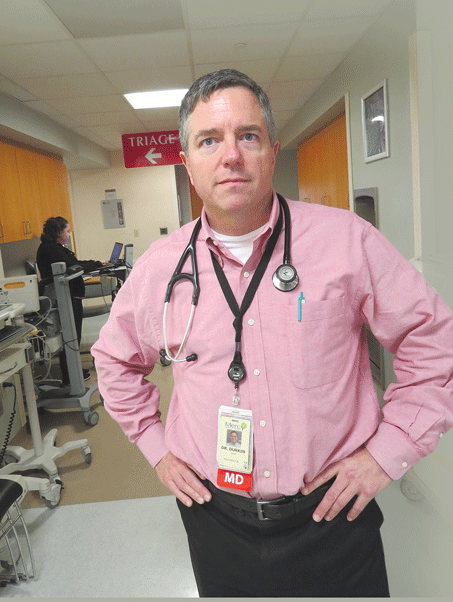









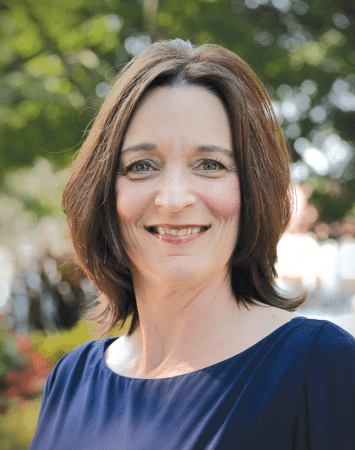

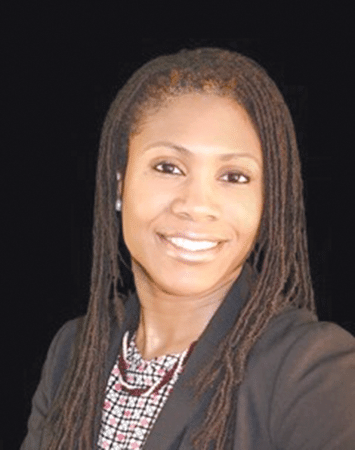
 Here are some frequently asked questions to help explain the changes.
Here are some frequently asked questions to help explain the changes.


